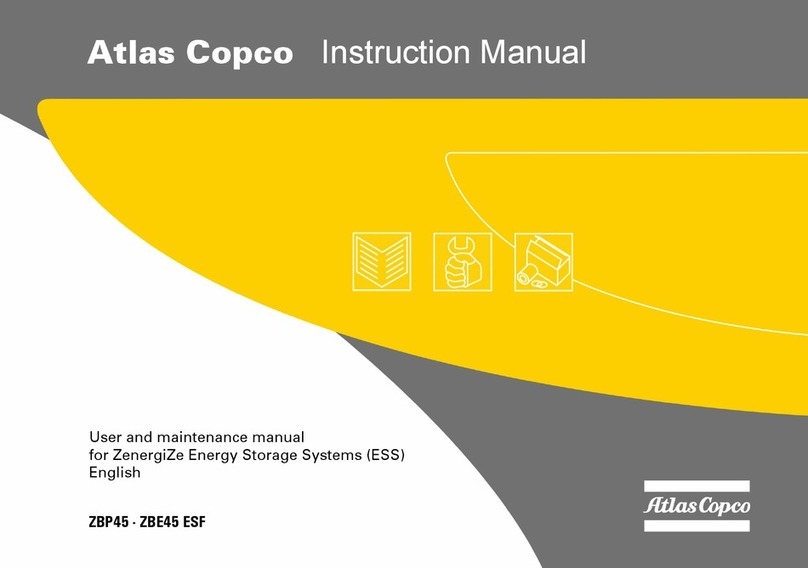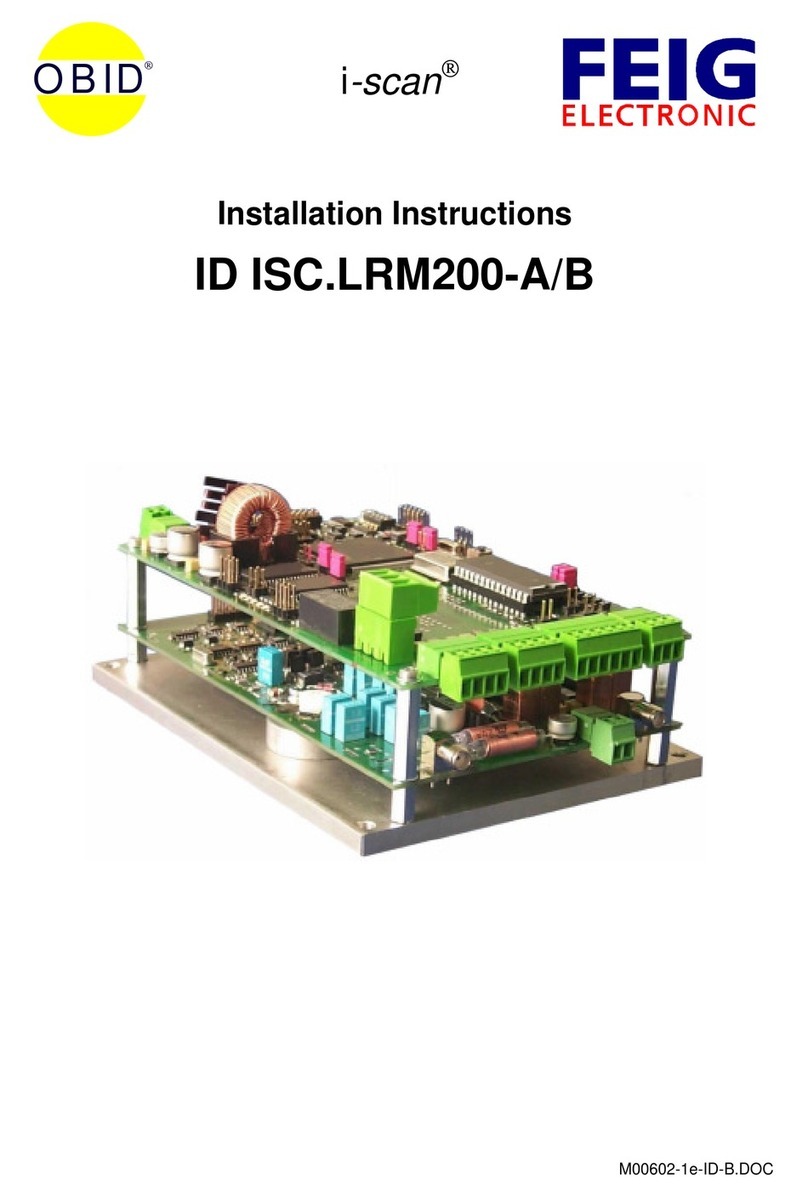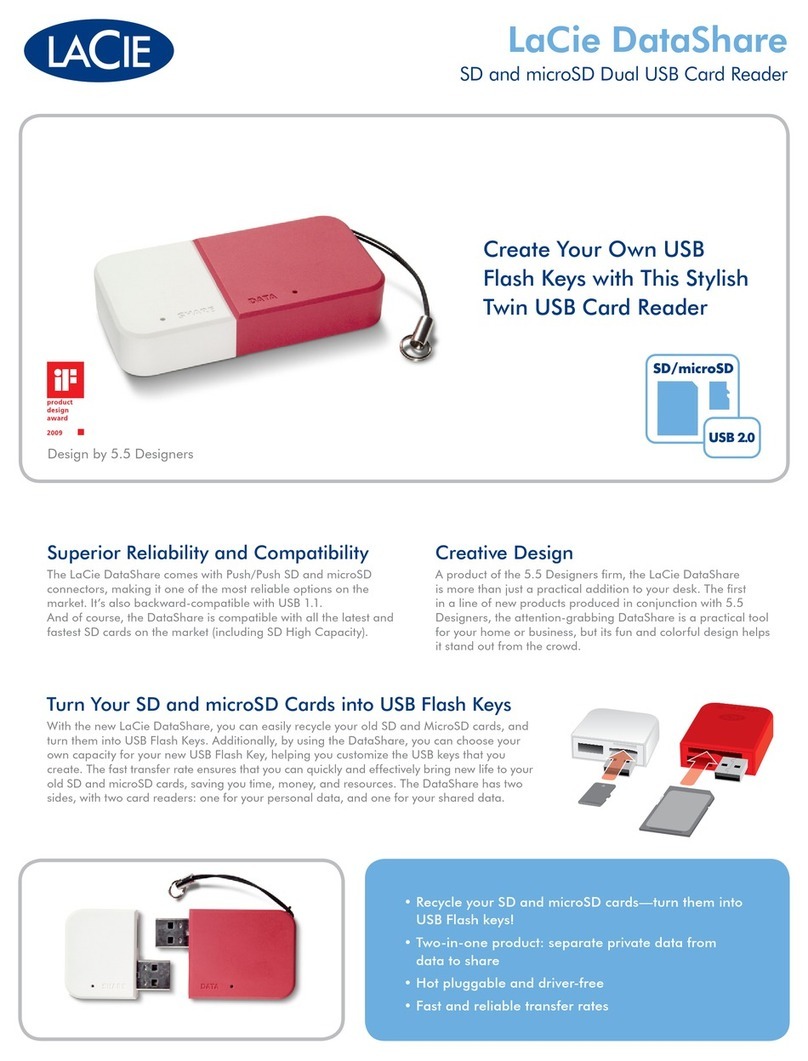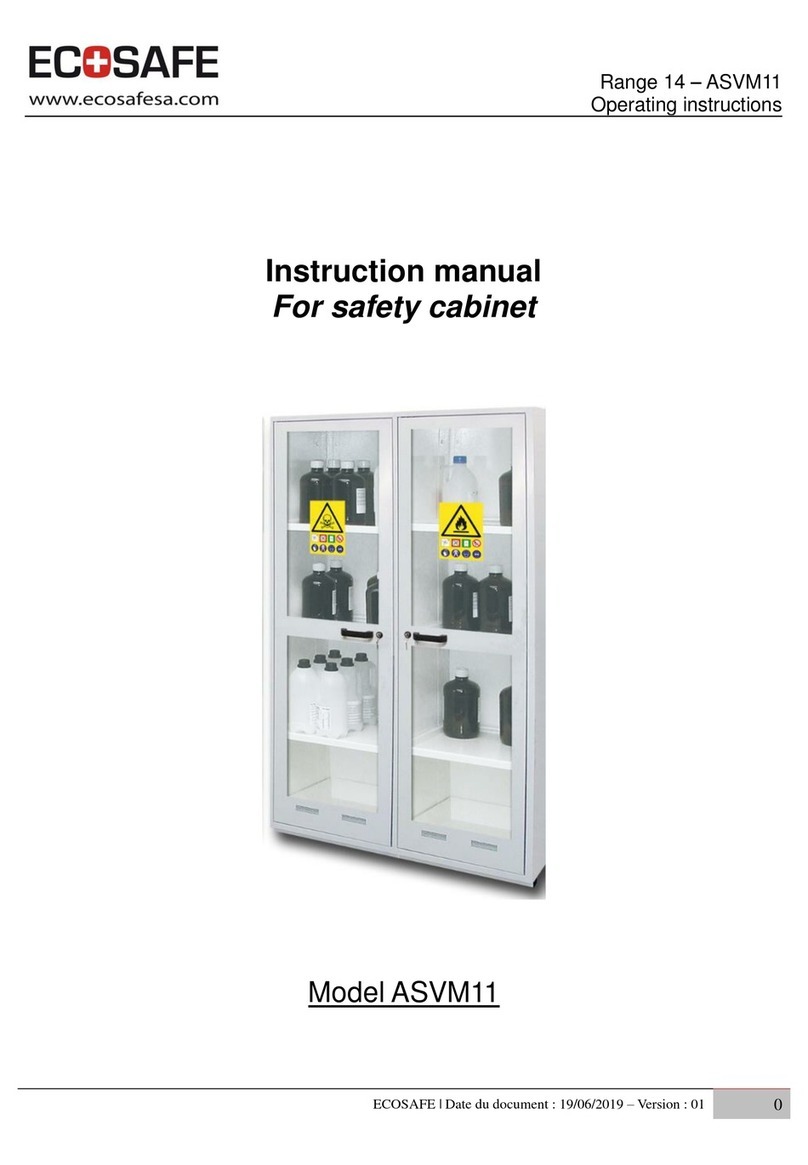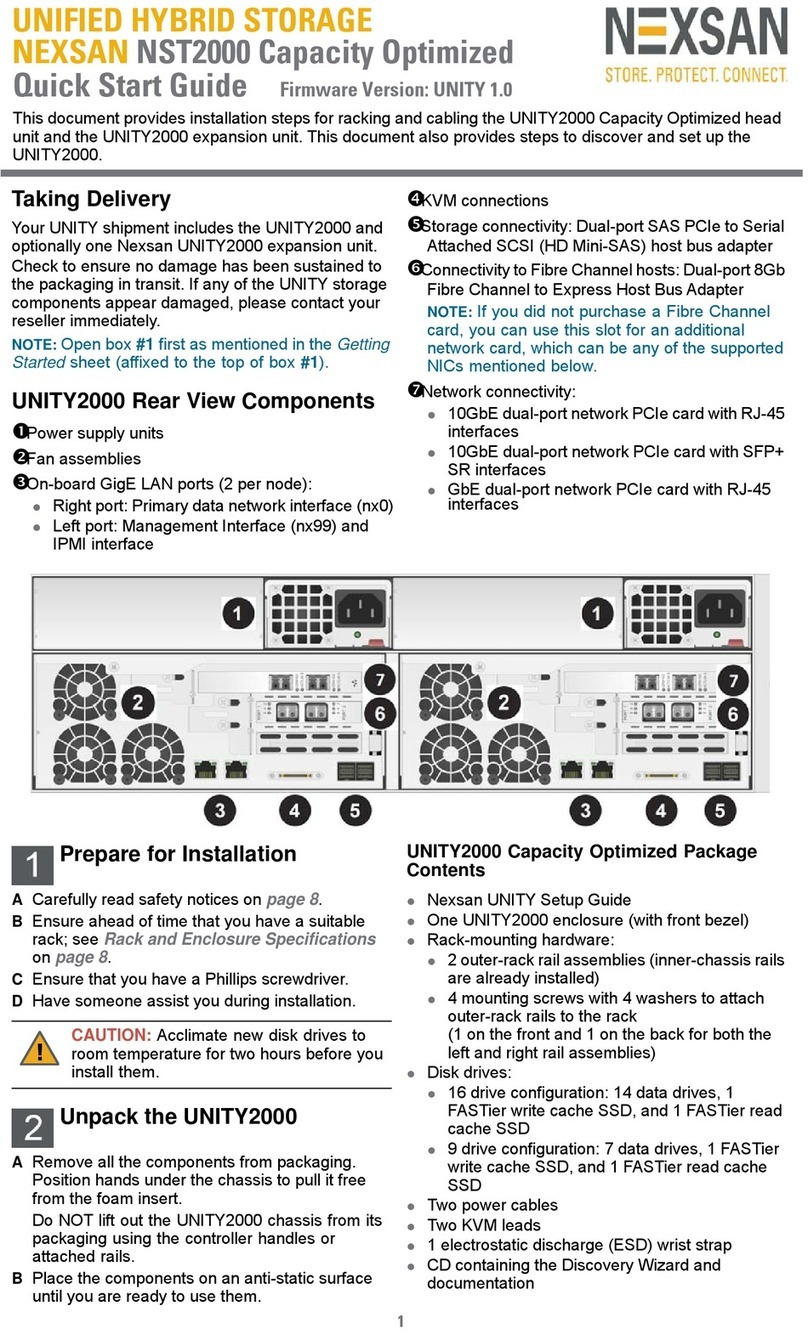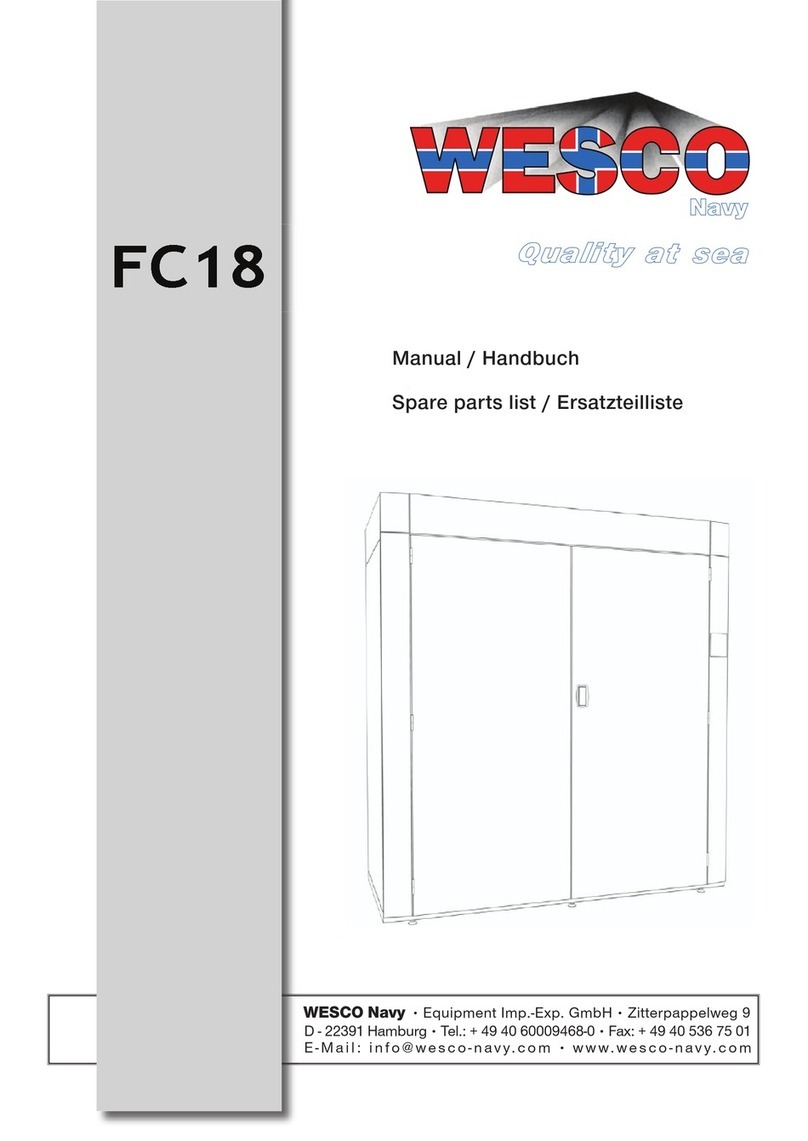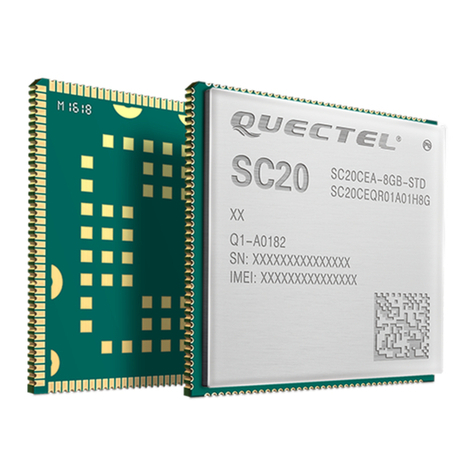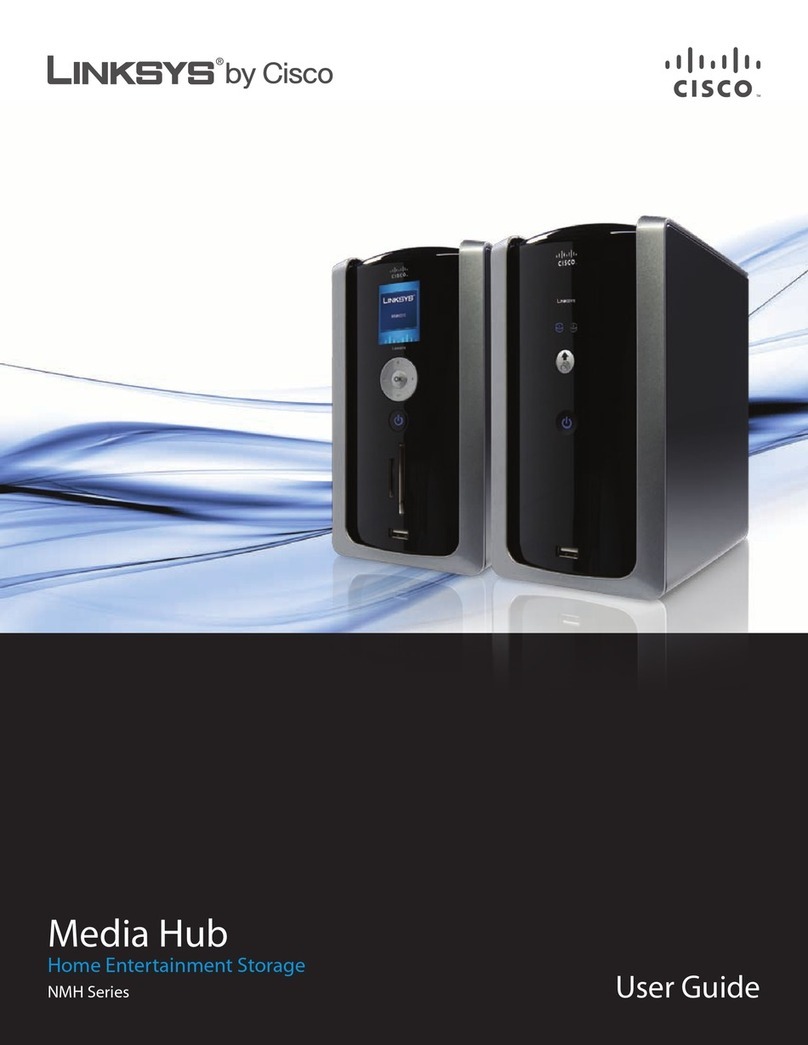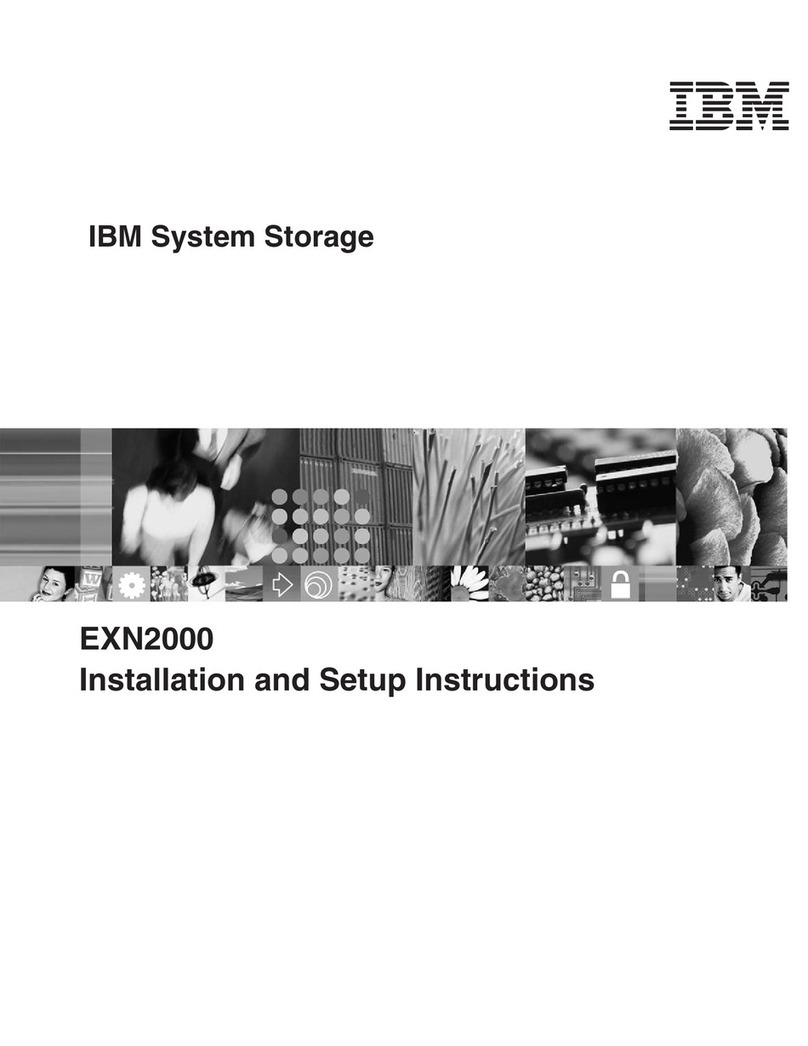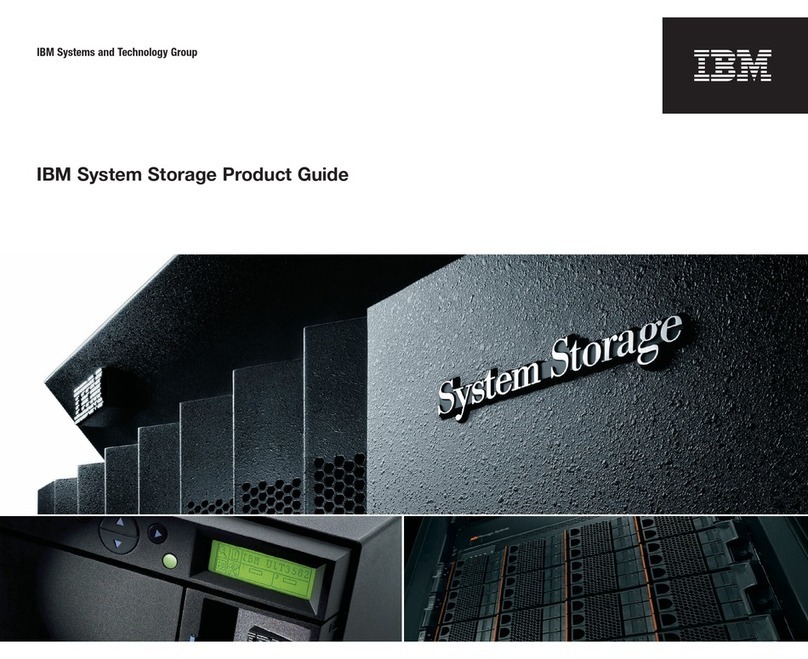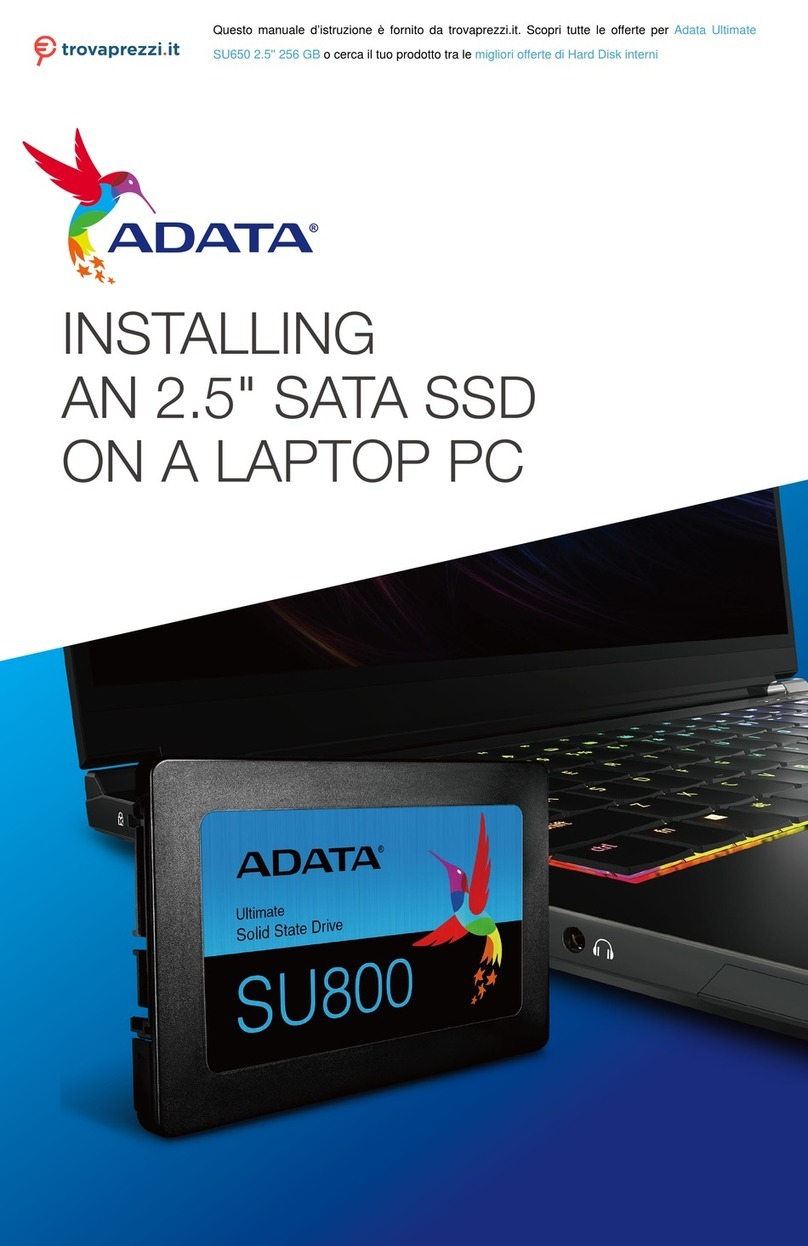Atlas Copco ZenergiZe ZBP15 User manual

Instruction book
ZenergiZe Energy Storage Systems (ESS)
ZBP15 - ZBP45 ESF


Atlas Copco
ZenergiZe Energy Storage Systems (ESS)
ZBP15 - ZBP45 ESF
Instruction book
Original instructions
COPYRIGHT NOTICE
Any unauthorized use or copying of the contents or any part thereof is prohibited.
This applies in particular to trademarks, model denominations, part numbers and
drawings.
This instruction book is valid for CE, non-CE as well as UKCA labelled machines. It
meets the requirements for instructions specified by the applicable European directives
or UK statutory instruments as identified in the Declaration of Conformity.
April 2023
No. 2960 8500 00
www.atlascopco.com

Table of contents
1 Safety precautions..........................................................................................................5
1.1 Introduction............................................................................................................................... 5
1.2 General safety precautions.................................................................................................... 6
1.3 Safety during transport and installation............................................................................ 7
1.4 Safety during use and operation............................................................................................ 8
1.5 Safety during maintenance and repair...................................................................................9
1.6 Tool applications safety........................................................................................................ 10
1.7 Battery safety precautions...................................................................................................10
2 Main parts......................................................................................................................12
2.1 General description................................................................................................................ 12
2.2 Markings and labels................................................................................................................ 13
2.3 Mechanical features............................................................................................................... 13
2.4 Electrical features.................................................................................................................14
3 Installation and connection......................................................................................... 20
3.1 Lifting.........................................................................................................................................20
3.2 Positioning and transport..................................................................................................... 20
3.3 Installation...............................................................................................................................22
3.4 Connecting the ESS.................................................................................................................22
4 Operating instructions................................................................................................. 25
4.1 Before starting........................................................................................................................25
4.2 Operating the ESS................................................................................................................... 25
Instruction book
2 2960 8500 00

5 Operating the ECO Controller..................................................................................... 32
5.1 General......................................................................................................................................32
5.2 Main side tabs............................................................................................................................33
5.3 Additional tabs......................................................................................................................... 60
5.4 Additional working modes......................................................................................................69
6 Maintenance..................................................................................................................75
6.1 Maintenance schedule.............................................................................................................75
6.2 Adjustments and service procedures..................................................................................76
7 Checks and troubleshooting....................................................................................... 85
8 Storage of the ESS....................................................................................................... 90
8.1 Storage..................................................................................................................................... 90
8.2 Preparing for operation after storage..............................................................................90
9 Disposal.........................................................................................................................91
9.1 General......................................................................................................................................91
9.2 Disposal of materials..............................................................................................................91
9.3 Disposal of Li-ion batteries....................................................................................................91
10 Available option............................................................................................................ 92
10.1 Overview of the electrical options......................................................................................92
10.2 Electrical options................................................................................................................... 92
10.3 Overview of the mechanical options.................................................................................... 95
10.4 Mechanical options..................................................................................................................95
Instruction book
2960 8500 00 3

11 Technical specifications of the ESS........................................................................... 97
11.1 Technical specifications of the ZBP15-ZBP45 unit.............................................................97
11.2 Critical bolt connections.................................................................................................... 100
11.3 Dimension drawing................................................................................................................. 102
11.4 Conversion list of SI units into British units................................................................... 103
11.5 Data plate................................................................................................................................103
12 Circuit diagrams......................................................................................................... 105
Instruction book
4 2960 8500 00

1 Safety precautions
To be read attentively and acted accordingly before towing, lifting, operating, performing
maintenance, or repairing the ESS.
1.1 Introduction
The policy of Atlas Copco is to provide the users of their equipment with safe, reliable and efficient
products. Factors taken into account are among others:
• the intended and predictable future use of the products, and the environments in which they are
expected to operate,
• applicable rules, codes and regulations,
• the expected useful product life, assuming proper service and maintenance,
• providing the manual with up-to-date information.
Before handling any product, take time to read the relevant instruction manual. Besides giving
detailed operating instructions, it also gives specific information about safety, preventive
maintenance, etc.
Keep the manual always at the unit location, easy accessible to the operating personnel.
See also the safety precautions of other equipment, which are separately sent along or are
mentioned on the equipment or parts of the unit.
These safety precautions are general and some statements will therefore not always apply to a
particular unit.
Only people that have the right skills should be allowed to operate, adjust, perform maintenance or
repair on Atlas Copco equipment. It is the responsibility of management to appoint operators with
the appropriate training and skill for each category of job.
Skill level 1: Operator
An operator is trained in all aspects of operating the unit with the push-buttons, and is trained to
know the safety aspects.
Skill level 2: Mechanical technician
A mechanical technician is trained to operate the unit the same as the operator. In addition, the
mechanical technician is also trained to perform maintenance and repair, as described in the
instruction manual, and is allowed to change settings of the control and safety system. A
mechanical technician does not work on live electrical components.
Skill level 3: Electrical technician
An electrical technician is trained and has the same qualifications as both the operator and the
mechanical technician. In addition, the electrical technician may carry out electrical repairs within
the various enclosures of the unit. This includes work on live electrical components.
Skill level 4: Specialist from the manufacturer
This is a skilled specialist sent by the manufacturer or its agent to perform complex repairs or
modifications to the equipment.
Instruction book
2960 8500 00 5

In general it is recommended that not more than two people operate the unit, more operators could
lead to unsafe operating conditions. Take necessary steps to keep unauthorized persons away from
the unit and eliminate all possible sources of danger at the unit.
When handling, operating, overhauling and/or performing maintenance or repair on Atlas Copco
equipment, the mechanics are expected to use safe engineering practices and to observe all
relevant local safety requirements and ordinances. The following list is a reminder of special safety
directives and precautions mainly applicable to Atlas Copco equipment.
Neglecting the safety precautions may endanger people as well as environment and machinery:
• endanger people due to electrical, mechanical or chemical influences,
• endanger the environment due to leakage of, solvents or other substances,
• endanger the machinery due to function failures.
All responsibility for any damage or injury resulting from neglecting these precautions or by non-
observance of ordinary caution and due care required in handling, operating, maintenance or repair,
also if not expressly mentioned in this instruction manual, is disclaimed by Atlas Copco.
The manufacturer does not accept any liability for any damage arising from the use of non-original
parts and for modifications, additions or conversions made without the manufacturer’s approval in
writing.
If any statement in this manual does not comply with local legislation, the stricter of the two shall be
applied.
Statements in these safety precautions should not be interpreted as suggestions, recommendations
or inducements that it should be used in violation of any applicable laws or regulations.
Atlas Copco is also not responsible for patent infringement or violation of any rights of third parties
arising out of the use of the ESS. Atlas Copco reserves the right to make changes regarding the
technical specifications of this product without prior notice.
1.2 General safety precautions
• The owner is responsible for maintaining the unit in a safe operating condition. Unit parts and
accessories must be replaced if missing or unsuitable for safe operation.
• The supervisor, or the responsible person, shall at all times make sure that all instructions
regarding machinery and equipment operation and maintenance are strictly followed and that
the machines with all accessories and safety devices, as well as the consuming devices, are in
good repair, free of abnormal wear or abuse, and are not tampered with.
• Whenever there is an indication or any suspicion that an internal part of a machine is
overheated, the machine shall be stopped but no inspection covers shall be opened before
sufficient cooling time has elapsed.
• Normal ratings (pressures, temperatures, speeds, etc.) shall be durably marked.
• Operate the unit only for the intended purpose and within its rated limits (pressure, temperature,
speeds, etc.).
• The machinery and equipment shall be kept clean, i.e. as free as possible from dust or other
deposits.
• To prevent an increase in working temperature, inspect filters regularly. See the maintenance
schedule.
• All regulating and safety devices shall be maintained with due care to ensure that they function
properly. They may not be put out of action.
Instruction book
6 2960 8500 00

• Safety devices shall be tested as described in the maintenance schedule of the instruction
manual to determine that they are in good operating condition.
•Mind the markings and information labels on the unit.
• In the event the safety labels are damaged or destroyed, they must be replaced to ensure
operator safety.
• Keep the work area neat. Lack of order will increase the risk of accidents.
• When working on the unit, wear safety clothing. Depending on the kind of activities these are:
safety glasses, ear protection, safety helmet (including visor), safety gloves, protective clothing,
safety shoes. Do not wear the hair long and loose (protect long hair with a hairnet), or wear
loose clothing or jewellery.
• Take precautions against fire. Keep a fire-extinguisher in the vicinity.
•Warning: The ESS is suitable for use in outdoor areas. Protection against moisture is
equivalent to the class IP54 (splash water protection).
ESS (with earthing pin): Earth the pack of batteries as well as the load properly. During
operation, hazardous voltages can be present at the ESS surroundings. Work on or in the
vicinity of the device is only allowed to be performed by qualified electricians. Before each job
(maintenance and repair) of the ESS, the device must be taken out of service by pressing the
emergency off switch! All consumers and voltage sources (generator, network or similar) must
be removed from the ESS surroundings. Otherwise, the ESS or a connected generator could
automatically start (under certain circumstances). Even routine maintenance may only be
carried out by qualified electricians.
It must therefore be ensured that, during the work on the electrical system, the device is stress-
free, i.e. separated from the generator or mains (AC voltage). Even if the ESS has been
separated from its voltage source (generator or grid), there may still be a dangerous voltage
present at the outputs. To avoid this, the emergency off switch must be pressed. Inputs and
outputs are separated by all Poles. All electrical components are discharged after 30 seconds
and the respective work can then be carried out safely.
If a thunderstorm occurs in the immediate vicinity of the ESS, disconnect all electrical devices
from the ESS and press the emergency off switch or the main switch! Overvoltage hazard!
Cleaning with steam radiators, high pressure cleaners, hard water jet or similar devices is not
allowed.
1.3 Safety during transport and installation
To lift a unit, all loose or pivoting parts, e.g. doors, shall first be securely fastened.
Do not attach cables, chains or ropes directly to the lifting eye; apply a crane hook or lifting shackle
meeting local safety regulations. Never allow sharp bends in lifting cables, chains or ropes.
Helicopter lifting is not allowed.
It is strictly forbidden to dwell or stay in the risk zone under a lifted load. Never lift the unit over
people or residential areas. Lifting acceleration and deceleration shall be kept within safe limits.
• In case of transporting a non-trailer unit on a truck, fasten it to the truck by attaching straps
mainly via the marked roof guides and additionally via the fork lift holes, via the holes in the
frame at the front and back or via the lifting beam. To prevent damage, never put straps on the
roof surface of the unit.
• To lift heavy parts, a hoist of ample capacity, tested and approved according to local safety
regulations, shall be used.
Instruction book
2960 8500 00 7

• Lifting hooks, eyes, shackles, etc., shall never be bent and shall only have stress in line with
their design load axis. The capacity of a lifting device diminishes when the lifting force is applied
at an angle to its load axis.
•Lifting eye of the unit can only be used when the environment temperature is between -20°C
and 80°C.
• For maximum safety and efficiency of the lifting apparatus all lifting members shall be applied
as near to perpendicular as possible. If required, a lifting beam shall be applied between hoist
and load.
• Never leave a load hanging on a hoist.
• A hoist has to be installed in such a way that the object will be lifted perpendicular. If that is not
possible, the necessary precautions must be taken to prevent load-swinging, e.g. by using two
hoists, each at approximately the same angle not exceeding 30° from the vertical.
• ESSs shall be stalled on an even, solid floor, in a clean location with sufficient ventilation. If the
floor is not level or can vary in inclination, consult Atlas Copco.
• The electrical connections shall correspond to local codes. The machines shall be earthed and
protected against short circuits by fuses or circuit breakers.
• Never connect the ESS outlets to an installation which is also connected to a public mains.
• Before connecting a load, switch off the corresponding circuit breaker, and check whether
frequency, voltage, current and power factor comply with the ratings of the pack of batteries.
• Before transportation of the unit, switch off all the circuit breakers.
1.4 Safety during use and operation
• When operating in a dust-laden atmosphere, place the unit so that dust is not carried towards it
by the wind. Operation in clean surroundings considerably extends the intervals for cleaning the
air intake filters and the cores of the coolers.
• All doors shall be shut during operation so as not to disturb the cooling air flow inside the
bodywork and/or render the silencing less effective. A door should be kept open for a short
period only e.g. for inspection or adjustment.
• Periodically carry out maintenance works according to the maintenance schedule.
• Stationary housing guards are provided on all rotating or reciprocating parts not otherwise
protected and which may be hazardous to personnel. Machinery shall never be put into
operation, when such guards have been removed, before the guards are securely reinstalled.
• Noise, even at reasonable levels, can cause irritation and disturbance which, over a long period
of time, may cause severe injuries to the nervous system of human beings.
• When the sound pressure level, at any point where personnel normally has to attend, is:
• below 70 dB(A): no action needs to be taken,
• above 70 dB(A): noise-protective devices should be provided for people continuously
being present in the room,
• below 85 dB(A): no action needs to be taken for occasional visitors staying a limited time
only,
• above 85 dB(A): room to be classified as a noisehazardous area and an obvious warning
shall be placed permanently at each entrance to alert people entering the room, for even
relatively short times, about the need to wear ear protectors,
• above 95 dB(A): the warning(s) at the entrance(s) shall be completed with the
recommendation that also occasional visitors shall wear ear protectors,
Instruction book
8 2960 8500 00

• above 105 dB(A): special ear protectors that are adequate for this noise level and the
spectral composition of the noise shall be provided and a special warning to that effect
shall be placed at each entrance.
• ZBP can work together with a generator, which can cause high sound pressure levels, so could
be necessary some of this previous actions.
• Never operate the unit in surroundings where there is a possibility of taking in flammable or
toxic fumes.
• If the working process produces fumes, dust or vibration hazards, etc. (hybridation mode with
generator), take the necessary steps to eliminate the risk of personnel injury.
• When using compressed air or inert gas to clean down equipment, do so with caution and use
the appropriate protection, at least safety glasses, for the operator as well as for any bystander.
Do not apply compressed air or inert gas to your skin or direct an air or gas stream at people.
Never use it to clean dirt from your clothes.
• Safety shoes should be compulsory in any workshop and if there is a risk, however small, of
falling objects, wearing of a safety helmet should be included.
• If there is a risk of inhaling hazardous gases, fumes or dust, the respiratory organs must be
protected and depending on the nature of the hazard, so must the eyes and skin.
• Remember that where there is visible dust, the finer, invisible particles will almost certainly be
present too; but the fact that no dust can be seen is not a reliable indication that dangerous,
invisible dust is not present in the air.
• Never operate the ESS in excess of its limits as indicated in the technical specifications.
• Do not open electrical cabinets, cubicles or other equipment while voltage is supplied. If such
cannot be avoided, e.g. for measurements, tests or adjustments, have the action carried out by
a qualified electrician only, with appropriate insulated tools, and ascertain that the required
bodily protection against electrical hazards is applied.
• Never touch the power terminals during operation of the machine.
• Whenever an abnormal condition arises, e.g. excessive vibration, noise, odour, etc., switch the
circuit breakers to OFF and stop the ESS. Correct the faulty condition before restarting.
• Check the electric cables regularly. Damaged cables and insufficient tightening of connections
may cause electric shocks. Whenever damaged wires or dangerous conditions are observed,
switch the circuit breakers to OFF. Replace the damaged wires or correct the dangerous
condition before restarting. Make sure that all electric connections are securely tightened.
• Avoid overloading the ESS, it is provided with circuit breakers for overload protection. When a
breaker has tripped, reduce the concerned load before restarting.
• Never remove the cover of the output terminals during operation. Before connecting or
disconnecting wires, switch off the load and the circuit breakers, stop the machine and make
sure that the machine cannot be started inadvertently or there is any residual voltage on the
power circuit.
• When operating the ESS in Remote or Auto mode, observe all relevant local legislation.
1.5 Safety during maintenance and repair
Maintenance, overhaul and repair work shall only be carried out by adequately trained personnel; if
required, under supervision of someone qualified for the job.
• Use only the correct insulated tools for maintenance and repair work, and only tools which are
in good condition.
• Parts shall only be replaced by genuine Atlas Copco replacement parts.
• All maintenance work, other than routine attention, shall only be undertaken when the unit is
stopped. Steps shall be taken to prevent inadvertent starting. In addition, a warning sign
Instruction book
2960 8500 00 9

bearing a legend such as “work in progress; do not start” shall be attached to the starting
equipment.
On electrically driven units the main switch shall be locked in open position and the fuses shall
be taken out. A warning sign bearing a legend such as “work in progress; do not supply
voltage” shall be attached to the fuse box or main switch.
•Prior to stripping a fan or undertaking major overhaul on it, disconnect to prevent any moving.
• Make sure that no tools, loose parts or rags are left in or on the machine. Never leave rags or
loose clothing near the engine air intake.
• Never use solvents for cleaning (components damage and firerisk).
• Take safety precautions against toxic vapours of cleaning liquids.
• Never use machine parts as a climbing aid.
• Observe scrupulous cleanliness during maintenance and repair. Keep away dirt, cover the parts
and exposed openings with a clean cloth, paper or tape.
• Do not remove any of, or tamper with, the sounddamping material. Keep the material free of dirt
and liquids such as cleansing agents. If any sounddamping material is damaged, replace it to
prevent the sound pressure level from increasing.
• When performing any operation involving heat, flames or sparks on a machine, the surrounding
components shall first be screened with nonflammable material.
• Never use a light source with open flame for inspecting the interior of a machine.
• Check the direction of rotation of electric motors when starting up the machine initially and after
any alteration to the electrical connection(s) or switch gear, to check that the pumps and the
fans function properly.
• Maintenance and repair work should be recorded in an operator’s logbook for all machinery.
Frequency and nature of repairs can reveal unsafe conditions.
• When hot parts have to be handled, e.g. shrink fitting, special heat-resistant gloves shall be
used and, if required, other body protection shall be applied.
• When using cartridge type breathing filter equipment, ascertain that the correct type of cartridge
is used and that its useful service life is not surpassed.
• Make sure that solvents and other substances likely to pollute the environment are properly
disposed of.
• Before clearing the ESS for use after maintenance, submit it to a test run, check that the AC
power performance is correct and that the control and shutdown devices function correctly.
All precautions regarding batteries: see section Battery safety precautions.
1.6 Tool applications safety
Apply the proper tool for each job. With the knowledge of correct tool use and knowing the
limitations of tools, along with some common sense, many accidents can be prevented.
Special service tools are available for specific jobs and should be used when recommended. The
use of these tools will save time and prevent damage to parts. Only insulated tools are allowed.
1.7 Battery safety precautions
While working on the Li-ion Battery wear protective eyeglasses and clothing.
• Observe these instructions and keep them located near the Li-ion Battery for future reference.
Work on the Li-ion Battery should be carried out by qualified personnel only.
Instruction book
10 2960 8500 00

• Any uncovered battery material such as electrolyte or powder on the skin or in the eyes must
be flushed with plenty of clean water immediately. Then seek medical assistance. Spillages on
clothing should be rinsed out with water.
• Explosion and fire hazard.
Terminals of the Li-ion Battery are always a live; therefore do not place items or tools on the Li-
ion Battery. Avoid short circuits, too deep discharges and too high charge currents. Use
insulated tools. Do not wear any metallic items such as watches, bracelets, etc. In case of fire,
you must use a type D, foam or CO2 fire extinguisher.
• Never try to open or dismantle the Li-ion Battery. Electrolyte is very corrosive. In normal
working conditions contact with the electrolyte is impossible. If the battery casing is damaged
do not touch the exposed electrolyte or powder because it is corrosive.
• Too deep discharges damage the Li-ion battery seriously and can even be dangerous.
Therefore, use of an external safety relay is obligatory.
• Li-ion Batteries are heavy. If involved in an accident they can become a projectile. Ensure
adequate and secure mounting and always use suitable handling equipment for transportation.
Handle with care because Li-ion Batteries are sensitive to mechanical shock.
• If charged after the Li-ion battery was discharged below the Discharge cut-off voltage, or when
the Li-ion battery is damaged or overcharged, the Li-ion battery can release a harmful mixture
of gasses such as phosphate.
• Non-compliance with operating instructions, repairs made with other than original parts, or
repairs made without authorization render the warranty void.
• The Li-ion battery must be transported in its original or equivalent package and in an upright
position.
If the battery is in its package, use soft slings to avoid damage.
Do not stand below a Li-ion battery when it is hoisted. Never lift the battery at the terminals,
only lift the battery at the handles.
• Batteries are tested according to UN Handbook of Tests and Criteria, part III, sub section 38.3
(ST/SG/ AC.10/11/Rev.5).
For transport the batteries belong to the category UN3480, Class 9, Packaging Group II and
have to be transported according to this regulation. This means that for land and sea transport
(ADR, RID & IMDG) they have to be packed according to packaging instruction P903 and for air
transport (IATA) according to packaging instruction P965. The original packaging satisfies these
instructions.
Instruction book
2960 8500 00 11

2 Main parts
2.1 General description
ZenergiZe modular ESS design to meet the requirements of applications such as rental, events and
telecom. Ideal for any metropolitan job or event. Based in lithium ion batteries, this portable product
is ready to supply power in the most demanding situation, working in island mode or a hybrid
solution together with a diesel generator. Giving flexibility to the final product with a list of options
such as solar panel connection to increase its sustainability or cold weather kit for the most critical
environments. A greener solution for a more efficient performance.
Reference Description Reference Description
AI Air inlets ES Emergency stop
AO Air outlet FS Forklift slots
BAH Batteries access hatch LE Lifting eye
DP Data plate PS Pallet slot
EP Earthing point SG Sling guides
EPL Earth pin location
Instruction book
12 2960 8500 00

2.2 Markings and labels
Markings provide instructions and information. They also warn of hazards. For convenience and
safety, keep all markings in legible condition, replacing them when damaged or missing.
Replacement markings are available from the factory.
A brief description of all markings provided on the ESS is given hereafter. The precise location of all
markings can be found in the parts manual of this ESS.
Markings Description
Indicates that an electric voltage,dangerous to life, is present. Never touch the
electric terminals during operation.
Indicates that these parts can become very hot during operation (e.g. engine,
cooler, etc.). Always make sure that these parts are cooled down before
touching them.
Indicatesthe forklift slots.
Indicates that the machine should not be cleaned with high pressurised water.
Indicates that the unit may start automatically and that the instruction book has
to be consulted prior to use.
Read the instruction manual before using the lifting eye.
Indicates the location of the battery. Avoid water ingress as this could cause
short circuits.
Indicates the earthing connections on the ESS.
Indicates the roof guides.
Indicates that the unit contains a chargeable battery.
Indicates that the unit contains lithium cells or batteries.
2.3 Mechanical features
The mechanical features described in this chapter are standard provided on this energy storage
pack.
Instruction book
2960 8500 00 13

2.3.1 Galvanized skid
To be able to lift the ESS by means of a forklift, a galvanized skid with rectangular slots is provided.
2.3.2 Galvanized and painted canopy
The unit is equipped with a galvanized steel canopy to avoid corrosion. This process means, there
is a considerable barrier between the steel plate and air ensuring that the painted surface is not
compromised.
The pieces are also cut with a Nitrogen high-pressure laser (prevents from rust while its
production). And they are all finished and protected with a powder coating paint.
Also rain caps are placed in the most sensitive parts of the machine to protect from water ingress.
2.3.3 Lifting beam and sling guides
A lifting beam is attached to the unit base frame. This single lifting point will allow to lift easily the
ESS.
In order to secure the position while transport, use the guides placed in the roof to avoid any
canopy damage with the proper slings.
This is not a lifting system alternative.
2.3.4 Data plate and serial number
The ESS is furnished with a data plate showing the product code, the unit number, the energy
stored and the power output. Refer section Data plate.
The serial number is located on the front side of the canopy.
2.4 Electrical features
The electrical features described in this chapter are standard provided on this ESS.
2.4.1 Lithium ION batteries
Lithium-iron-phosphate (LiFePO4 or LFP) is the safest of its family. Service life even slightly
improves in case of partial charge instead of a full charge. This is a major advantage in addition, its
wide operating temperature range, excellent cycling performance, low internal resistance and high
efficiency.
LFP is therefore the chemistry of choice for very demanding applications.
Each battery is controlled by the BMS (Battery Management System) that makes possible the
communication between components and learn from each performance, as for example, get
automatically their cells balanced.
2.4.2 Inverter / battery charger
Power electronics that combines inverter and charger. It is needed to transform the energy supply
from batteries (DC) to the loads (AC) with or without additional sources as diesel generators or grid.
They can provide to the consumer double of their nominal power during short period (seconds)
thanks to its overload capability, enabling the start of inductive loads as electric motors.
Instruction book
14 2960 8500 00

2.4.3 Control and power cubicle
The control cubicle grouping the ESS controller, fuses, automatic switches sockets, etc., is
accessible by opening the door at the front.
ZBP45-xx
Reference Description Reference Description
A1 EMS 1 X10 MALE POWER LOCKS
H17 GREEN LAMP 24 VDC X13 MALE 3P 16A SOCKET
H18 GREEN LAMP 230 VAC X20 FEMALE POWER LOCKS
Q6
BREAKER 2P 20A DC
X22 FEMALE 5P 63A SOCKET
Q7 X23 FEMALE 5P 32A SOCKET
Q8 X26 FEMALE 3P 16A SOCKET
Q9 X27 FEMALE 3P 16A SOCKET
Q10 BREAKER 4P 100/63A X32 HARTING CONNECTOR 7P
Q13 BREAKER 2P 16A X34 HARTING CONNECTOR 4P
Q20 BREAKER 4P 160A X35 SOLAR CONNECTOR +
Q26 RCBO C16 30MA X37 SOLAR CONNECTOR -
Q27 X70 RJ45
N20 ELR 30-300mA S20 EMERGENCY STOP
Instruction book
2960 8500 00 15

ZBP45-xx
Reference Description Reference Description
Q21 BREAKER 4P 125A Q25 RCBO 2P 32A 30MA
Q22 BREAKER 4P 63A N22 RCBO 4P 63A
Q23 BREAKER 4P 32A X11 MALE 5P 125A SOCKET
Q24 RCBO 2P 32A 30MA X21 FEMALE 5P 125A SOCKET
Note: Refer previous table for rest of the descritptions.
Instruction book
16 2960 8500 00

ZBP45-xx
Reference Description Reference Description
Q28
BREAKER 2P 63A
X28
FEMALE 3P 63A SOCKETQ29 X29
Q30 X30
Note: Refer previous tables for rest of the descritptions.
Instruction book
2960 8500 00 17

ZBP15-60
Reference Description Reference Description
A1 EMS 1 Q21 RCBO 2P 32A 30MA
H17 GREEN LAMP 24 VDC Q22 RCBO 2P 32A 30MA
H18 GREEN LAMP 230 VAC N20 ELR 30-300 mA
Q2 BREAKER 1P 2A X10 MALE 3P 63A SOCKET
Q3 BREAKER 2P 16A X13 MALE 3P 16A SOCKET
Q4 BREAKER 2P 20A DC X20 FEMALE 3P 63A SOCKET
Q5 BREAKER 2P 20A DC X21 FEMALE 3P 32A SOCKET
Q6 BREAKER 2P 20A DC X22 FEMALE 3P 32A SOCKET
Q7 BREAKER 2P 20A DC X32 HARTING CONNECTOR 7P
Q8 BREAKER 2P 20A DC X34 HARTING CONNECTOR 4P
Q9 BREAKER 2P 20A DC X35 SOLAR CONNECTORS +
Q10 BREAKER 2P 63A X37 TERMINAL STRIP
Q13 BREAKER 2P 16A X70 RJ45
Q20 BREAKER 2P 125A S20 EMERGENCY STOP
Sockets panel
The ESS is provided with inlet and outlets sockets:
•One main inlet 3-phases socket X21 to connect to the external power supply (genset or mains).
• Several 3-phases (X11-X22) and 2 single phase outlet sockets (X29-X30) to connect the
different loads to the ESS.
Instruction book
18 2960 8500 00
This manual suits for next models
1
Table of contents
Other Atlas Copco Storage manuals
